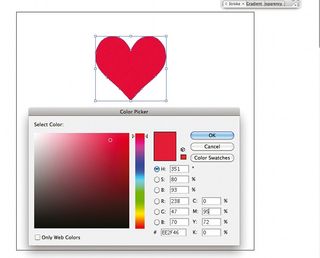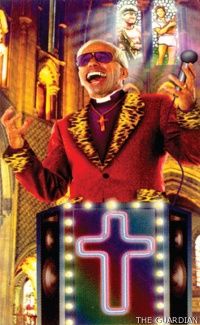Computer Arts 200: Steve Caplin
1995's king of digital photomontage gets the profile treatment in the first issue of Computer Arts
There's a lot of Steve Caplin in issue 1 of Computer Arts; one of the main features was illustrated extensively with his surreal photomontages, and then there was this profile piece, which I particularly like for the Camera Obscura piece at the bottom. It still resonates today. I got to work with Steve quite a bit in the late 1990s, and it was always a treat to see his interpretations of my stupid ideas turn up as an illustration or comic strip. Great times.

Steve Caplin
If it's bug-eyed politicians and surreal imagery you want, Steve Caplin is the man to beat. Profiles discovers the art of political satire is not dead
Steve Caplin is one of the most distinctive computer-based illustrators working today. With a bug-eyed and slightly surreal style all of his own, Steve's work has been appearing in the national dailies, on billboards and in various ad campaigns for nearly a decade. He's perhaps best known for his Camera Obscura series in The Guardian. Produced in conjunction with Paul Jeremy, Camera Obscura has been providing a pithy commentary on the political scene for over five years now, and was the first photomontage comic strip of its kind in the world. But there are some interesting technical difficulties involved in creating it.
“The biggest problem is getting hold of pictures of celebrities. When a complete non-entity like John Major was elected as Prime Minister I had to record videos of him in different poses and then pull them into my Mac through a digitiser card. I had to work extremely fast as a number of magazines and newspapers wanted illustrations the week he was elected.

“Basically, what I do is exclusively photomontage. I use Photoshop on a PowerMac 8100/80 with 104MBs of RAM. But even then it's never fast enough. I also have an old Mac IIcx I use for scanning — the two are networked together. The scanner is an Epson GT9000, and I've just got a Nikon Coolscan 35mm slide scanner. And there are various Syquests and 128Mb opticals scattered around.
“For source material, apart from video I also use a lot of CD-ROM photographic collections. They're good for objects — backgrounds, cars, buildings, kitchen utensils — but not for bodies. Those I take from magazines, and remaindered film books. I have hundreds of source books - things like ‘The Golden Years of Hollywood’. In fact I nick bits from all over the place. Copyright has never been a problem. I've never been challenged, let alone sued. Apparently there's some law that says if you use less than 10% of something in your final image you're okay.
“I get a lot of inspiration from current events, especially the government. They're great inspiration. Hardly a day goes by without a new scandal. I'm building up my stocks of Tony Blair, just in case.
“The worst thing is that I just don't get the time I want. It's fun, but it's also a nightmare. Some clients phone me up at lunch time and want something finished by 4pm. I look at it and think ‘If I had another hour, this would be brilliant...‘ And I get messed around by ad agencies something rotten. One recent job was for pickled mustard — the agency took the photos and I coloured them in. It was awful. It looked like pools of vomit. But at least when I'd finished they were tasteful pools of vomit.
“My favourite job? The next one! That sounds twee, but it's true. Photoshop is this huge program, there's just so much to learn. I also use the 3D modelling program, Dimensions, to create objects I can't find photographs of. And the updates and plug-ins.. There's so much to learn and an increasing number of new toys to play with... It just gets better and better!"


This month we're looking back at our first issue, in preparation for our milestone 200th issue of Computer Arts, featuring 200 of the best design moments since our 1995 launch, as well as exclusive video tutorials from Build and Nexus, 15 pages of industry skills and advice in the Design Manual, and cutting edge design tutorials.
Whatever you do, don't miss it - you can click here to pre-order. And keep checking the site for more treats from 1995.

Thank you for reading 5 articles this month* Join now for unlimited access
Enjoy your first month for just £1 / $1 / €1
*Read 5 free articles per month without a subscription

Join now for unlimited access
Try first month for just £1 / $1 / €1
Get the Creative Bloq Newsletter
Daily design news, reviews, how-tos and more, as picked by the editors.
The Creative Bloq team is made up of a group of design fans, and has changed and evolved since Creative Bloq began back in 2012. The current website team consists of eight full-time members of staff: Editor Georgia Coggan, Deputy Editor Rosie Hilder, Ecommerce Editor Beren Neale, Senior News Editor Daniel Piper, Editor, Digital Art and 3D Ian Dean, Tech Reviews Editor Erlingur Einarsson, Ecommerce Writer Beth Nicholls and Staff Writer Natalie Fear, as well as a roster of freelancers from around the world. The ImagineFX magazine team also pitch in, ensuring that content from leading digital art publication ImagineFX is represented on Creative Bloq.
